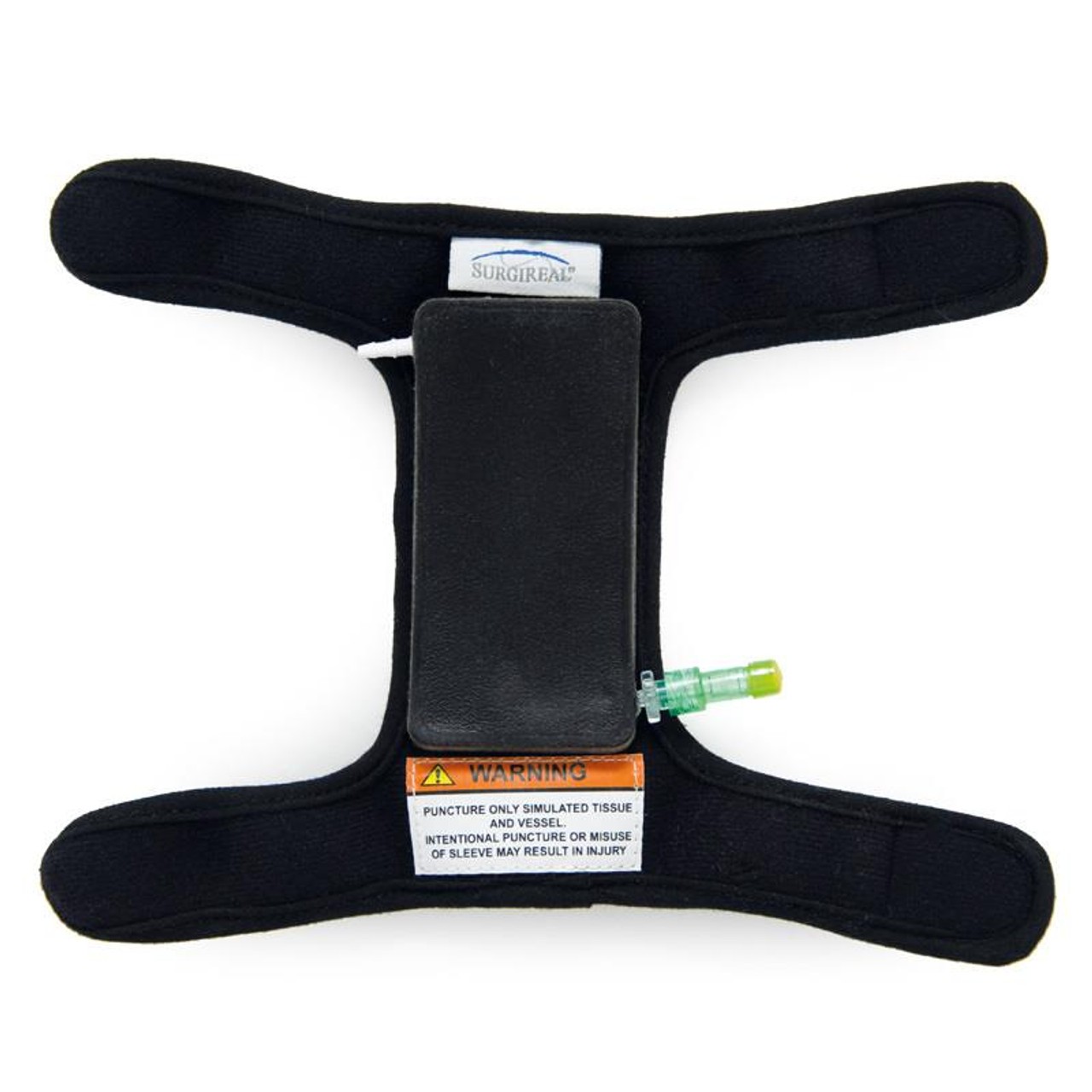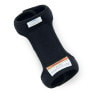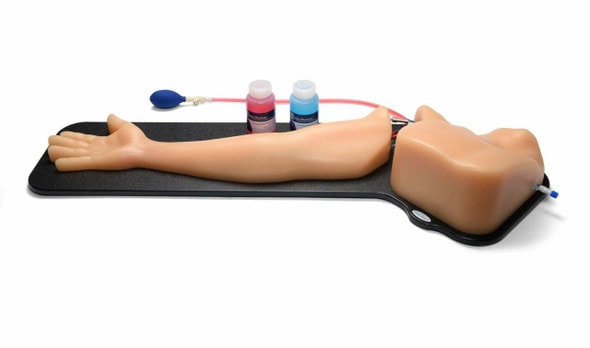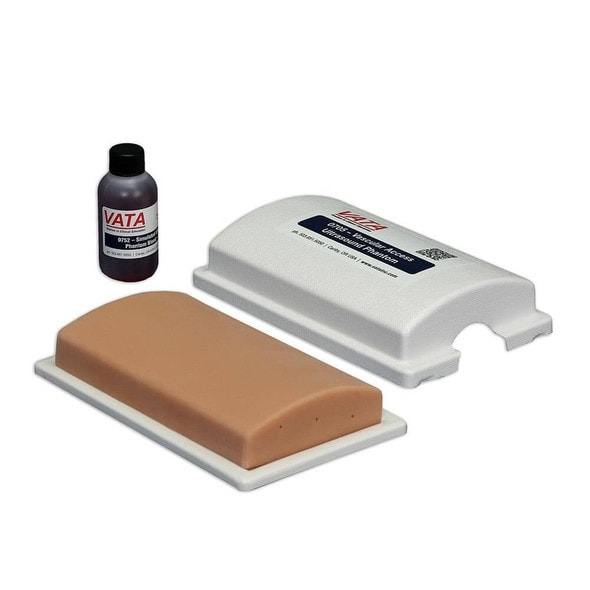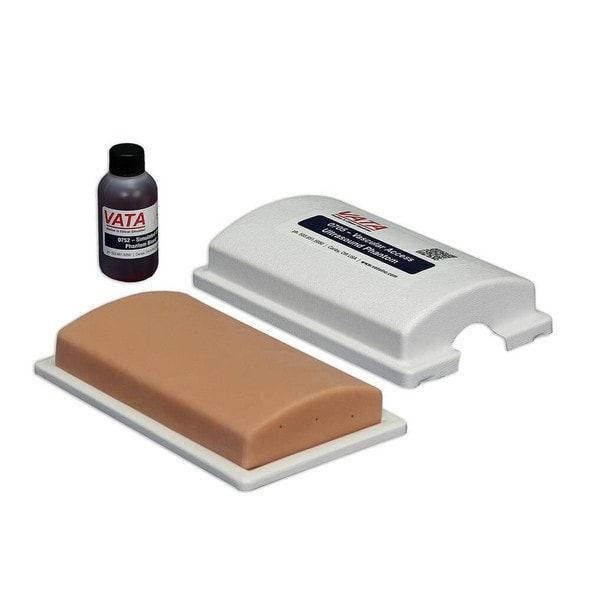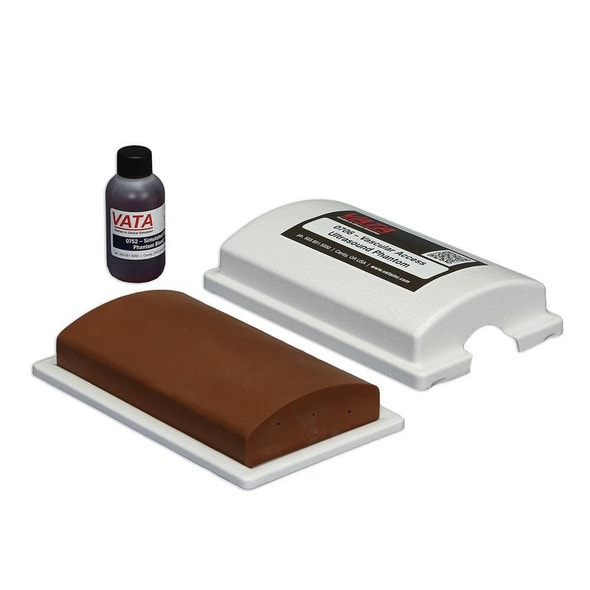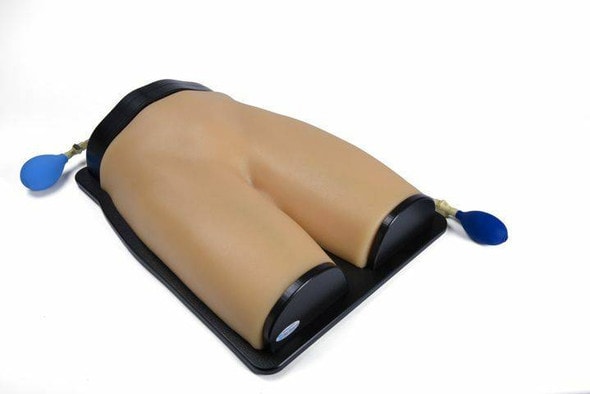- Home
- Promotions
- New Products on Anatomy Warehouse
- Veterinary Vascular Access Sleeve Wearable Trainer
Description
Veterinary Vascular Access Sleeve: A Detailed Overview
Introduction
The Veterinary Vascular Access Sleeve is a specialized device designed to facilitate safe and efficient venous access in animals. It is primarily used in veterinary clinics, hospitals, and schools to ensure the secure placement of intravenous (IV) catheters or lines, enhancing both the safety and comfort of the patient. This tool is essential for veterinarians and veterinary technicians, offering a reliable method to protect and maintain vascular access over extended periods.
Purpose and Applications
The primary purpose of the Veterinary Vascular Access Sleeve is to secure IV catheters and other vascular access points, preventing dislodgement, contamination, and damage. This is crucial in various veterinary procedures, including:
- Fluid Therapy: Ensuring continuous fluid administration in dehydrated or critically ill animals.
- Medication Delivery: Providing a stable route for intravenous medications, which require precise dosing and timing.
- Anesthesia Administration: Supporting the administration of anesthetics during surgical procedures.
- Long-term Treatments: Facilitating the administration of long-term therapies, such as chemotherapy or antibiotic treatments.
Key Features
- Durability and Comfort: The sleeve is made from durable, yet soft and flexible materials that can withstand repeated use while being comfortable for the animal. The material typically has antimicrobial properties to reduce the risk of infection.
- Adjustability: The sleeve is adjustable to fit various sizes of animals, from small cats and dogs to larger breeds or even livestock. This ensures a snug fit, reducing the risk of the sleeve slipping or causing discomfort.
- Secure Closure Mechanism: Most sleeves are equipped with a secure closure system, such as Velcro straps, that allows easy application and removal while keeping the catheter in place. Some designs may include additional features like hook-and-loop fasteners or ties for added security.
- Visibility: Some sleeves feature transparent or semi-transparent sections that allow veterinary professionals to monitor the catheter site without removing the sleeve. This feature is especially useful for detecting signs of inflammation or infection early.
- Breathability: The sleeve material is often breathable, allowing air circulation to the skin. This minimizes moisture buildup, which can lead to skin irritation or infection.
- Sterility: Many Veterinary Vascular Access Sleeves are designed to be sterile or come in sterile packaging, ensuring that they do not introduce pathogens to the vascular access site during application.
Usage in Veterinary Practice
Veterinary Clinics and Hospitals
In a clinical setting, the Veterinary Vascular Access Sleeve is invaluable for maintaining venous access in animals undergoing treatment. Veterinarians and veterinary technicians use the sleeve to ensure that the IV line remains secure and functional, reducing the need for repeated catheter insertions, which can be stressful and painful for the animal.
Veterinary Schools
In veterinary schools, the sleeve is an essential teaching tool. Students are trained in the proper use of vascular access sleeves as part of their education in patient care. Learning to secure and maintain IV catheters using the sleeve helps future veterinarians and veterinary technicians develop the skills necessary for efficient and compassionate animal care.
Benefits
- Reduced Complications: By securing the IV catheter, the sleeve helps reduce complications such as catheter dislodgement, which can lead to infiltration, extravasation, or phlebitis.
- Improved Animal Comfort: The sleeve minimizes discomfort for the animal by preventing the catheter from moving or becoming dislodged, reducing the likelihood of irritation or injury.
- Enhanced Efficiency: For veterinary professionals, the sleeve simplifies the process of maintaining vascular access, allowing them to focus on other aspects of patient care.
- Cost-Effective: By reducing the frequency of catheter replacements and associated complications, the sleeve can contribute to cost savings in veterinary practices.
Conclusion
The Veterinary Vascular Access Sleeve is a critical tool in modern veterinary medicine, supporting the safe and effective administration of treatments that require vascular access. Its design, tailored specifically for veterinary applications, ensures that it meets the unique needs of animals, veterinarians, and veterinary technicians. Whether in a busy clinic or a teaching environment, the sleeve plays a key role in enhancing the quality of care provided to animal patients.

